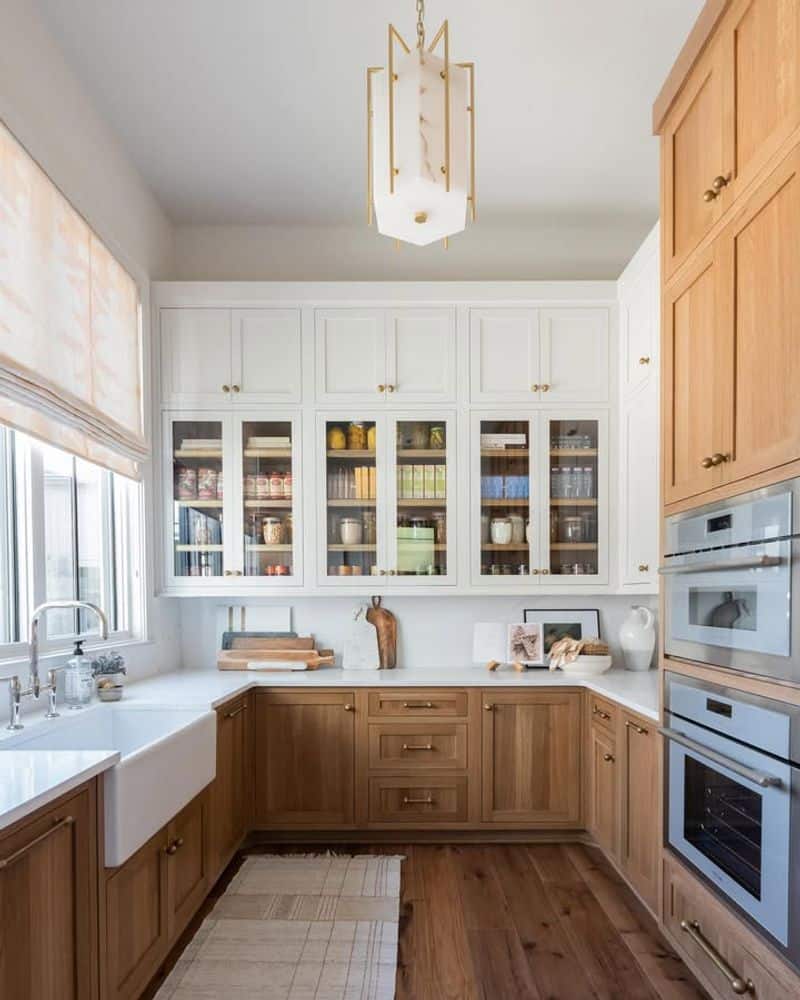Welcome, kitchen connoisseur, to the wild and wacky world of upper cabinets!
Deciding on just how many of these majestic storage units your culinary kingdom deserves can feel like solving a riddle wrapped in a mystery inside an IKEA instruction manual.
Fear not—we’re here to guide you through the cabinet conundrum with a generous helping of humor and a dash of common sense.
1. The Cabinet Conundrum: Too Few or Too Many?
Picture your kitchen as a stage and your upper cabinets as the supporting cast.
- Too Few Cabinets: Imagine your pots, pans, and your secret stash of oddball mugs staging a revolt because they’re forced to live in the open (or worse, on the counter). A sparse cabinet count might leave your essentials dangling in the open, like a poorly organized clown car where nothing ever fits.
- Too Many Cabinets: On the flip side, an overabundance of cabinets can make your kitchen feel like a labyrinthine closet, where finding your favorite dish becomes an epic quest of Indiana Jones proportions.
The trick is to strike a balance—enough to house your kitchen treasures without turning the room into a storage facility that even a hoarder would envy.
2. Step 1: Size Does Matter
Before you fall into the temptation of “more is better,” measure your space.
- Spacious Kitchens: If your kitchen is as roomy as a ballroom, you might have the luxury of installing a few extra cabinets without feeling claustrophobic.
- Cozy Corners: For those with a compact cooking space, a few well-placed cabinets can be the difference between a chic, organized haven and a scene from a sitcom titled “Where Did All the Dishes Go?”
3. Step 2: Consider Your Clutter Appetite
Are you a proud collector of vintage spatulas and eclectic dishware, or do you believe in the “less is more” philosophy?
- The Collector: If every gadget and trinket must have its place, you might lean toward more cabinets. Just be sure that in your zeal to store everything, you don’t transform your kitchen into a cabinet maze that even you can’t navigate after midnight.
- The Minimalist: If you prefer a clean, modern look (and fewer arguments with your spouse about “too much stuff”), a smaller number of upper cabinets might be just the ticket.
4. Step 3: Style Meets Functionality
Your upper cabinets aren’t just utilitarian boxes—they’re a key element of your kitchen’s personality.
- Modern Marvel: Sleek, handle-less designs paired with a streamlined cabinet count can create a modern masterpiece.
- Rustic Retreat: A few weathered, open-front cabinets might evoke the charm of a countryside kitchen, where every piece has a story (and maybe a family secret or two).
Remember, your cabinet count should complement the overall design vibe, not detract from it.
After all, nothing screams “design disaster” like a mismatched cabinet count that makes guests wonder if you lost a bet at a home makeover show.
5. Step 4: Accessibility Is Key
While aesthetics are important, don’t forget that these cabinets need to be accessible.
- Reach and Retrieve: Imagine the daily acrobatics of reaching for that spice jar on the top shelf. If you’ve overdone it, you might end up perfecting your circus act rather than enjoying your morning coffee.
- The Right Balance: Too high and your upper cabinets risk turning into a gym membership you never signed up for. Too low, and they might start looking like a quirky design choice rather than a thoughtful one.
6. Final Thoughts: Trust Your Gut (and Your Tape Measure)
At the end of the day, there’s no magic formula for the “perfect” number of upper cabinets—it’s all about balance.
Listen to your space, trust your inner designer, and remember that a well-planned kitchen is like a well-told joke: it has a setup, a punchline, and leaves everyone smiling (and maybe even a little bit inspired).
So, measure twice, plan once, and go forth with confidence. May your upper cabinets be ever functional, fabulously stylish, and perfectly numbered for a kitchen that truly works for you!







